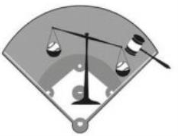The US Court of Appeals for the Federal Circuit affirmed two Patent Trial & Appeal Board decisions holding the challenged claims unpatentable as obvious, even though the Board declined to consider evidence of antedating and found that the claims lacked written description support. Parus Holdings, Inc. v. Google LLC, Case Nos. 22-1269; -1270 (Fed. Cir. June 12, 2023) (Lourie, Bryson, Reyna, JJ.)
Parus Holdings owns two patents related to an interactive voice system to request information from a voice web browser. Google (among others) petitioned for inter partes review (IPR) of the patents.
During the IPR proceedings, the Board found that a publication (Kovatch) was prior art to the challenged patents. In reaching that decision, the Board declined to consider Parus’s arguments and evidence of an earlier conception and reduction to practice because they were only presented via incorporation by reference in violation of 37 C.F.R. § 42.6(a)(3). The Board ruled that Parus failed to meet its burden of production on antedating.
The Board also found that the publication of the application to which Parus’s challenged patents claimed priority (Kurganov-262) was prior art because the common specification failed to provide written description support for the challenged claims. Parus appealed the Board’s decision, raising two main arguments.
First, Parus contended that the Board erred when it declined to consider Parus’s arguments and evidence on antedating. Parus argued that § 42.6(a)(3)’s prohibition on incorporation by reference did not warrant the Board’s decision because Parus, as patent owner, need not have submitted a response at all. Parus also argued that the Federal Circuit’s 2017 decision in Aqua Products mandates that the Board consider all record evidence, regardless of the manner of presentation. The Federal Circuit rejected Parus’s arguments in turn.
Regarding Parus’s violation of the incorporation by reference rule, the Federal Circuit explained that Parus had assumed an affirmative burden of production when it chose to submit a response to antedate Kovatch. Along with that burden came other responsibilities, such as complying with the US Patent & Trademark Office’s (PTO) rules and regulations, including § 42.6(a)(3). The Court further explained that this burden of production could not be met without some combination of citing evidence with specificity and explaining the significance of the cited material. Parus did neither.
The Federal Circuit also rejected Parus’s argument that the Board is required by law to review all evidence in the record. The Court clarified that, while its Aqua Products holding requires the Board to decide all issues properly before it, nothing in Aqua Products requires the Board to review evidence or issues not introduced or introduced in violation of the Board’s rules. As the Court noted, “[t]he burden of production cannot be met simply by throwing mountains of evidence at the Board without explanation or identification of the relevant portions of that evidence. One cannot reasonably expect the Board to sift through hundreds of documents, thousands of pages, to find the relevant facts.”
Parus also argued that the Board exceeded its statutory authority under 35 U.S.C. [...]
Continue Reading
read more


 Subscribe
Subscribe



